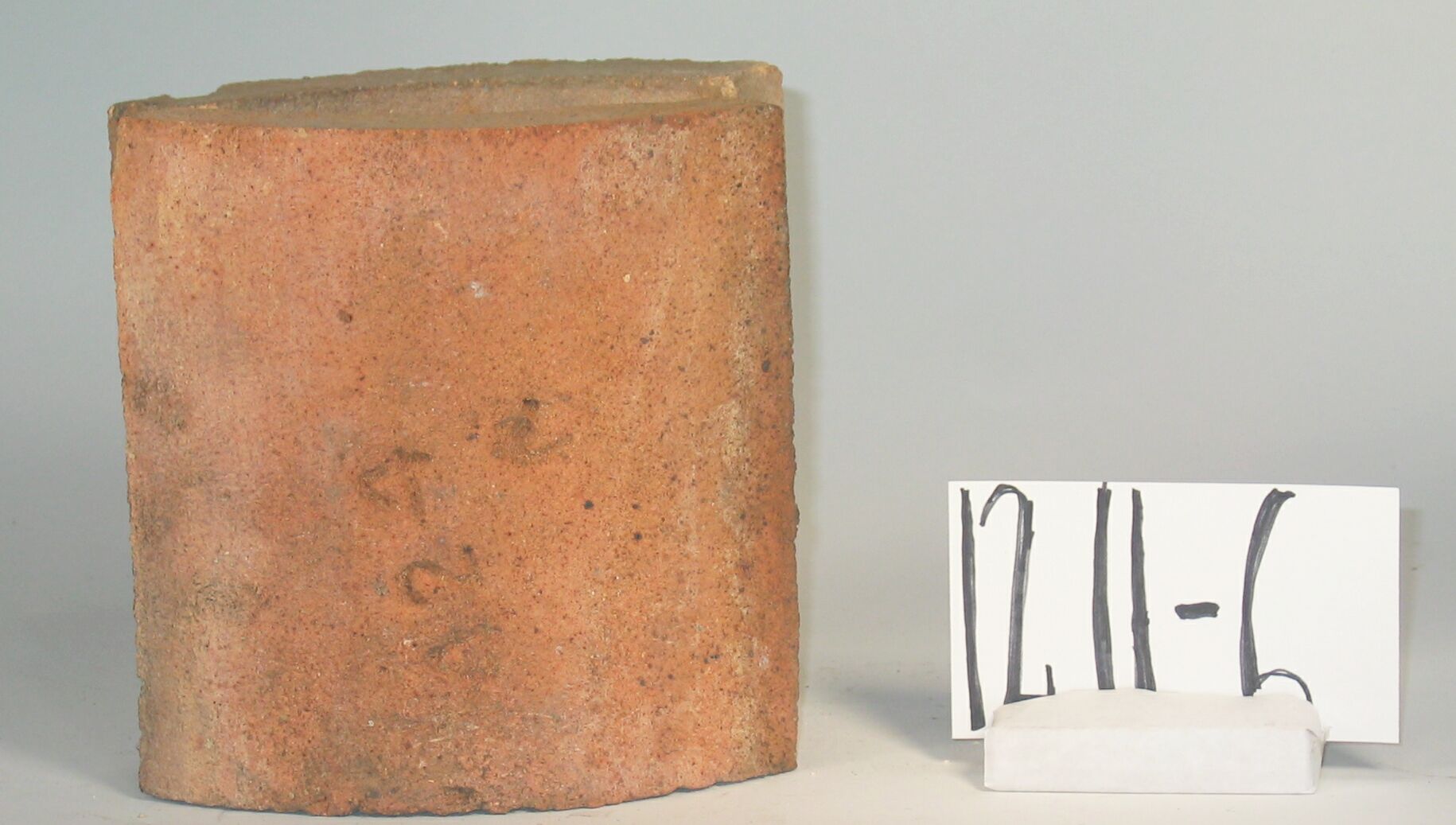12.11-6: A P Green 1945 Pre-Cast Refractory Sections

| HHCC Accession No. 2006.121 | HHCC Classification Code: 12.11-6 |
|---|
Description:
Pre-cast, sectional, circular, high temperature refractory sections, made in a range of sizes and compositions, became widely used starting in the 1940’s for the construction of ‘fire boxes’ [combustion chambers]. The firebox, holding a 2.600 degree F. flame in check, was a critical component, determining both system safety and performance, 2 sections, model 424, A P Green, Circa 1945.
Group:
12.11 Pressure Atomizing Oil Burner Equipment and Systems - Other Components and Parts
Make:
A P Green
Manufacturer:
A P Green, Toronto
Model:
424
Serial No.:
Size:
7 x 8 x 2 in each
Weight:
9 lbs.
Circa:
1945
Rating:
Exhibit, education, and research quality, illustrating the form and construction of pre-formed, sectional, circular refractory sections used as for building ‘fire boxes’ [combustion chambers], starting in the 1940’s
Patent Date/Number:
Provenance:
From York County (York Region) Ontario, once a rich agricultural hinterlands, attracting early settlement in the last years of the 18th century. Located on the north slopes of the Oak Ridges Moraine, within 20 miles of Toronto, the County would also attract early ex-urban development, to be come a wealthy market place for the emerging household and consumer technologies of the early and mid 20th century.
This artifact was discovered in the 1950’s in the used stock of T. H. Oliver, Refrigeration and Electric Sales and Service, Aurora, Ontario, an early worker in the field of agricultural, industrial and consumer technology.
Type and Design:
Construction:
Material:
Special Features:
Accessories:
Capacities:
Performance Characteristics:
Operation:
Control and Regulation:
Targeted Market Segment:
Consumer Acceptance:
Merchandising:
Market Price:
Technological Significance:
With the evolution of the industry came pre-formed, sectional, circular refractory sections in a range of sizes, pre-shaped for certain firing rates and fire chambers
The evolution of pre-formed, sectional, circular refractory was hastened by the development of unitary, factory made and assembled warm air furnaces, winter air conditioners and hot water home heating boilers. Shipped to the job site this equipment came complete with oil burner, refractory and control system reedy for installation.
Industrial Significance:
With the evolution of unitary equipment for residential heating in Canada came generally higher levels of system performance, reliability and safety, with much of the guess work required with the conversion of hand fired wood and coal fired systems gone. The significant developments in ceramics engineering, reflected in the refractory materials of the period, should not be understated, for they made possible the evolution of automatic home heating and its seminal contribution to life in Canada. An unobtrusive technology in the public eye, the accomplishments in ceramics engineering tend to get lost in the midst of the Gee-Whiz technological achievements in combustion and electric control engineering of the 1920’s and 30’s. By the 1960’s much ceramic-based combustion chamber engineering would give way to light weight stainless steel configurations, considered preferable for the new world of unitary equipment, pre-tested and shipped to the job site ready for installation.
Socio-economic Significance:
Socio-cultural Significance:
Donor:
G. Leslie Oliver, The T. H. Oliver HVACR Collection
HHCC Storage Location:
Tracking:
Bibliographic References:
First-Rate Fireboxes, P 10; The Facts about Fireboxes, P13; Hot Flames, P17; To Reduce Pulsation, P.19; ‘Better Oil Heating, A Service Guide, Operation and maintenance of Oil Burners, Fuel Oil and Heat, New York, 1959.









